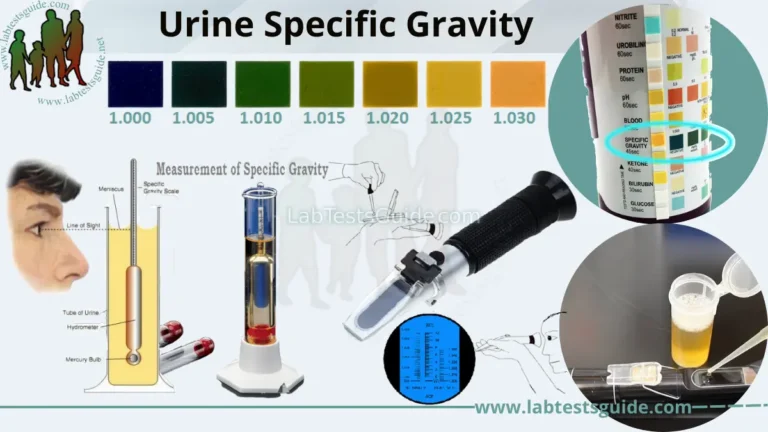Urine culture antibiotic discs are small circular pieces of paper or plastic that are impregnated with various antibiotics. They are used in microbiology laboratories to test the susceptibility of bacteria to different antibiotics. Here is a possible table of contents for a discussion of urine culture antibiotic discs:

Introduction: What are urine culture antibiotic discs?
Urine culture antibiotic discs are small circular discs or discs made of plastic or paper that are impregnated with specific antibiotics. These discs are used in clinical microbiology laboratories to determine the susceptibility of bacteria isolated from urine specimens to different antibiotics.
When a urine sample is sent to the laboratory, the bacteria present in the sample are grown on a culture medium. A small sample of the bacterial growth is then taken and spread onto a petri dish. Several discs containing different antibiotics are then placed on the petri dish, and the dish is incubated overnight. If the bacteria are susceptible to a particular antibiotic, they will not grow around the disc. However, if they are resistant, they will continue to grow and form a visible ring around the disc.
Urine culture antibiotic discs are an important tool for guiding the appropriate treatment of urinary tract infections, as they allow clinicians to select antibiotics that are likely to be effective against the specific bacteria causing the infection.
Purpose of using urine culture antibiotic discs in microbiology:
The purpose of using urine culture antibiotic discs in microbiology is to determine the susceptibility of bacteria to different antibiotics for guiding appropriate treatment of bacterial infections, including urinary tract infections.
How urine culture antibiotic discs work:
Urine culture antibiotic discs work by determining the susceptibility of bacteria to different antibiotics. They contain a specific concentration of antibiotics that diffuse into the surrounding agar, and the size of the zone of inhibition is measured to determine the susceptibility of the bacteria to the antibiotic.
Preparing and performing a urine culture antibiotic disc test:
Preparing and performing a urine culture antibiotic disc test involves the following steps:
- Collecting a urine sample from the patient.
- Plating the urine sample onto a culture medium, such as blood agar or MacConkey agar.
- Placing antibiotic discs on the plate and incubating the plate at the appropriate temperature for a set period of time.
- Observing the plate for the presence or absence of zones of inhibition around the antibiotic discs.
- Measuring the diameter of the zones of inhibition to determine the susceptibility of the bacteria to the antibiotics.
- Interpreting the results according to established standards and reporting the results to the clinician.
This process helps to determine the most effective antibiotic treatment for bacterial infections, including UTIs, and is an important tool in promoting the appropriate use of antibiotics and reducing the risk of antibiotic resistance.
Reading and interpreting urine culture antibiotic disc results:
Reading and interpreting urine culture antibiotic disc results involves observing the plate for the presence or absence of zones of inhibition around the antibiotic discs and measuring the diameter of the zones of inhibition. The size of the zone of inhibition is compared to established standards to determine the susceptibility of the bacteria to the antibiotic. The results are reported to the clinician, who can then choose the most appropriate antibiotic treatment for the patient.
Limitations and considerations of using urine culture antibiotic discs:
Limitations and considerations of using urine culture antibiotic discs include:
- False negatives: Sometimes, bacteria can be resistant to an antibiotic but still appear susceptible on a urine culture antibiotic disc test due to factors such as poor diffusion or insufficient concentration of the antibiotic.
- False positives: Occasionally, bacteria may appear susceptible on a urine culture antibiotic disc test even though they are resistant, which can result from factors such as cross-reactivity with other antibiotics or overgrowth of other organisms.
- Interpretation variability: There can be variability in the interpretation of the results, which can depend on factors such as the experience of the microbiologist, the quality of the culture, and the specific antibiotic disc used.
- Testing limitations: Urine culture antibiotic disc testing is limited to bacterial and fungal infections and cannot detect viral or parasitic infections.
- Proper selection: It’s important to properly select which antibiotic discs to use based on the patient’s medical history, clinical presentation, and susceptibility profile of bacteria causing the infection.
- Antibiotic stewardship: Overreliance on antibiotic disc testing may lead to inappropriate use of antibiotics, which can contribute to the development of antibiotic resistance.
- Patient factors: Factors such as the patient’s age, pregnancy status, renal function, and drug allergies must be considered when interpreting urine culture antibiotic disc results and selecting appropriate antibiotic treatment.
Clinical applications of urine culture antibiotic discs:
Clinical applications of urine culture antibiotic discs include:
- Diagnosis of urinary tract infections (UTIs): Urine culture antibiotic discs are commonly used to diagnose and treat UTIs, which are among the most common bacterial infections.
- Selection of appropriate antibiotics: By determining the susceptibility of bacteria to different antibiotics, urine culture antibiotic discs can help clinicians select the most appropriate antibiotic treatment for a patient.
- Monitoring antibiotic resistance: Urine culture antibiotic discs can help monitor the prevalence of antibiotic resistance and inform antibiotic stewardship programs.
- Guiding treatment for other infections: Urine culture antibiotic discs can be used to guide the selection of antibiotic treatment for other infections, such as respiratory or bloodstream infections, in which the causative organism is known or suspected.
- Monitoring treatment efficacy: Urine culture antibiotic discs can be used to monitor the efficacy of antibiotic treatment by repeating the test after treatment has begun to determine if the bacteria are responding to the selected antibiotics.
Emerging technologies and alternatives to urine culture antibiotic discs:
Emerging technologies and alternatives to urine culture antibiotic discs include:
- Molecular diagnostics: Molecular methods such as polymerase chain reaction (PCR) and nucleic acid sequencing can rapidly and accurately detect the presence of bacterial or viral DNA or RNA, and can also detect antibiotic resistance genes.
- Matrix-assisted laser desorption/ionization time-of-flight mass spectrometry (MALDI-TOF MS): This technology uses a mass spectrometer to identify microorganisms based on their unique protein profiles, and can also detect antibiotic resistance.
- Point-of-care testing (POCT): POCT devices can provide rapid diagnostic results at the point of care, including for UTIs. Examples include dipstick tests and handheld fluorescence microscopy devices.
- Antimicrobial stewardship programs: These programs aim to promote the appropriate use of antibiotics and prevent the development of antibiotic resistance, by providing guidelines and protocols for antibiotic use and monitoring antibiotic prescribing practices.
- Alternative therapies: Research is ongoing into alternative therapies for bacterial infections, such as phage therapy and bacteriocins, which may provide alternatives to antibiotics.
Conclusion: Future directions for urine culture antibiotic discs:
In the future, urine culture antibiotic discs may continue to be an important tool for the diagnosis and treatment of urinary tract infections and other bacterial infections. However, there are ongoing efforts to improve the accuracy and efficiency of this testing method, as well as to develop new technologies and alternative therapies for bacterial infections. This includes the development of rapid molecular diagnostics and point-of-care testing, as well as the promotion of antimicrobial stewardship programs and the exploration of alternative therapies. As the field of microbiology continues to advance, it is likely that urine culture antibiotic discs will be complemented by a range of other diagnostic and therapeutic options to help combat the global threat of antibiotic resistance.
Urine culture antibiotic discs are small circular pieces of paper or plastic that are impregnated with various antibiotics. They are used in microbiology laboratories to test the susceptibility of bacteria to different antibiotics.
Common Bacteria Antibiotic Sensitivity:
| Bacteria isolates | Number of isolates | Incidence rate (%) |
|---|---|---|
| Staphylococcus aureus | 60 | 28 |
| Escherichia coli | 53 | 24.6 |
| Staphylococcus saprophyticus | 43 | 20 |
| Pseudomonas aeruginosa | 18 | 8.4 |
| Proteus spp. | 11 | 5.1 |
| Enterococcus faecalis | 10 | 4.6 |
| Klebsiella pneumoniae | 8 | 3.7 |
| Streptococcus spp. | 6 | 2.8 |
| Neisseria gonorrhoeae | 3 | 1.4 |
| Bacillus spp. | 3 | 1.4 |
Common Antibiotic Discs Use in Urine Culture:
Some common antibiotic discs used in urine culture testing include:
- Ciprofloxocin
- Moxifloxacin
- Ofloxacin
- Sparfloxacin
- Levofloxacin
- Nalidixic Acid
- Gatifloxacin
- Tobramycin
- Amikacin
- Gentamycin
- Ceftazidime
- Cefotaxime
- Ceftriaxone
- Imipenem
- Meropenem
- Nitrofurantoin
- Netillin
- Co-trimoxazole
Antibiotics sensitivity pattern of Staphylococcus aureus:
| Antibiotics | Resentant % | Sensitive % |
|---|---|---|
| Ciprofloxocin (CIP) | 33.33 | 60 |
| Moxifloxacin (MOX) | 60 | 40 |
| Ofloxacin (OFL) | 13.33 | 86.67 |
| Sparfloxacin (SPR) | 6.67 | 93.33 |
| Levofloxacin (LEV) | 26.67 | 73.33 |
| Nalidixic Acid (NAL) | 100 | 0 |
| Gatifloxacin (GTX) | 33.33 | 66.67 |
| Tobramycin (TOB) | 20 | 73.33 |
| Amikacin (AMK) | 80 | 20 |
| Gentamycin (GET) | 13.33 | 80 |
| Ceftazidime (CTZ) | 46.67 | 53.33 |
| Cefotaxime (CTX) | 100 | 0 |
| Ceftriaxone (CFX) | 0 | 93.33 |
| Imipenem (IMP) | 0 | 100 |
| Meropenem (MRP) | 20 | 80 |
| Nitrofurantoin (NFT) | 6.67 | 86.67 |
| Netillin (NTL) | 6.67 | 93.33 |
| Co-trimoxazole (COT) | 53.33 | 40 |
Antibiotics sensitivity pattern of E Coli
| Antibiotics | Resistent % | Sensitive % |
|---|---|---|
| Ciprofloxocin (CIP) | 69.69 | 30.3 |
| Moxifloxacin (MOX) | 56.06 | 40.91 |
| Ofloxacin (OFL) | 40.91 | 56.06 |
| Sparfloxacin (SPR) | 37.88 | 56.06 |
| Levofloxacin (LEV) | 27.27 | 66.67 |
| Nalidixic Acid (NAL) | 90.91 | 7.58 |
| Gatifloxacin (GTX) | 60.61 | 39.39 |
| Tobramycin (TOB) | 96.97 | 3.03 |
| Amikacin (AMK) | 9.09 | 90.91 |
| Gentamycin (GET) | 68.18 | 30.3 |
| Ceftazidime (CTZ) | 78.79 | 18.18 |
| Cefotaxime (CTX) | 87.88 | 10.61 |
| Ceftriaxone (CFX) | 53.03 | 46.97 |
| Imipenem (IMP) | 0 | 98.48 |
| Meropenem (MRP) | 4.55 | 95.45 |
| Nitrofurantoin (NFT) | 25.76 | 74.24 |
| Netillin (NTL) | 15.15 | 84.85 |
| Co-trimoxazole (COT) | 84.85 | 15.15 |
Antibiotics sensitivity pattern of Pseudomonas aeruginosa
| Antibiotics | Resestant % | Sensitive % |
|---|---|---|
| Ciprofloxocin (CIP) | 5 | 95 |
| Moxifloxacin (MOX) | NT | NT |
| Ofloxacin (OFL) | 15 | 85 |
| Sparfloxacin (SPR) | 100 | 0 |
| Levofloxacin (LEV) | 40 | 60 |
| Nalidixic Acid (NAL) | 85 | 20 |
| Gatifloxacin (GTX) | NT | NT |
| Tobramycin (TOB) | 60 | 40 |
| Amikacin (AMK) | 95 | 0 |
| Gentamycin (GET) | 10 | 90 |
| Ceftazidime (CTZ) | 65 | 35 |
| Cefotaxime (CTX) | 90 | 5 |
| Ceftriaxone (CFX) | 95 | 5 |
| Imipenem (IMP) | 5 | 95 |
| Meropenem (MRP) | 0 | 100 |
| Nitrofurantoin (NFT) | 90 | 10 |
| Netillin (NTL) | 20 | 80 |
| Co-trimoxazole (COT) | 5 | 85 |
Antibiotics sensitivity pattern of Klebsiella pneumoniae
| Antibiotics | Resistant % | Sensitive % |
|---|---|---|
| Ciprofloxocin (CIP) | 79.31 | 20.69 |
| Moxifloxacin (MOX) | 58.62 | 41.38 |
| Ofloxacin (OFL) | 6.89 | 82.76 |
| Sparfloxacin (SPR) | 51.72 | 48.28 |
| Levofloxacin (LEV) | 10.34 | 89.66 |
| Nalidixic Acid (NAL) | 65.52 | 34.48 |
| Gatifloxacin (GTX) | 20.69 | 79.31 |
| Tobramycin (TOB) | 68.97 | 31.03 |
| Amikacin (AMK) | 17.24 | 79.31 |
| Gentamycin (GET) | 34.48 | 65.52 |
| Ceftazidime (CTZ) | 79.31 | 13.79 |
| Cefotaxime (CTX) | 37.93 | 62.07 |
| Ceftriaxone (CFX) | 20.69 | 79.31 |
| Imipenem (IMP) | 75.86 | 24.14 |
| Meropenem (MRP) | 13.79 | 86.21 |
| Nitrofurantoin (NFT) | 62.07 | 37.93 |
| Netillin (NTL) | 27.59 | 74.41 |
| Co-trimoxazole (COT) | 34.48 | 65.52 |
Antibiotics sensitivity pattern of Proteus spp.
| Antibiotics | Resistant % | Sensitive % |
|---|---|---|
| Ciprofloxocin (CIP) | 35.71 | 64.29 |
| Moxifloxacin (MOX) | 42.86 | 50 |
| Ofloxacin (OFL) | 57.14 | 42.86 |
| Sparfloxacin (SPR) | 21.43 | 78.57 |
| Levofloxacin (LEV) | 14.29 | 85.71 |
| Nalidixic Acid (NAL) | 64.29 | 35.71 |
| Gatifloxacin (GTX) | 50 | 50 |
| Tobramycin (TOB) | 7.14 | 85.71 |
| Amikacin (AMK) | 28.57 | 71.43 |
| Gentamycin (GET) | 21.43 | 71.43 |
| Ceftazidime (CTZ) | 78.57 | 21.43 |
| Cefotaxime (CTX) | 14.29 | 78.57 |
| Ceftriaxone (CFX) | 92.86 | 0 |
| Imipenem (IMP) | 0 | 100 |
| Meropenem (MRP) | 0 | 100 |
| Nitrofurantoin (NFT) | 57.14 | 42.86 |
| Netillin (NTL) | 85.71 | 14.29 |
| Co-trimoxazole (COT) | 28.57 | 64.29 |
Antibiotics sensitivity pattern of Enterococcus faecalis
| Antibiotics | Resistant % | Sensitive % |
|---|---|---|
| Ciprofloxocin (CIP) | 18.18 | 81.82 |
| Moxifloxacin (MOX) | 9.09 | 90.91 |
| Ofloxacin (OFL) | 0 | 100 |
| Sparfloxacin (SPR) | 0 | 100 |
| Levofloxacin (LEV) | 0 | 100 |
| Nalidixic Acid (NAL) | 18.18 | 72.73 |
| Gatifloxacin (GTX) | 9.09 | 81.82 |
| Tobramycin (TOB) | 27.27 | 72.73 |
| Amikacin (AMK) | 18.18 | 81.82 |
| Gentamycin (GET) | 9.09 | 90.91 |
| Ceftazidime (CTZ) | 45.45 | 54.55 |
| Cefotaxime (CTX) | 9.09 | 90.91 |
| Ceftriaxone (CFX) | 54.55 | 36.36 |
| Imipenem (IMP) | 0 | 100 |
| Meropenem (MRP) | 0 | 100 |
| Nitrofurantoin (NFT) | 81.82 | 18.18 |
| Netillin (NTL) | 36.36 | 62.64 |
| Co-trimoxazole (COT) | 45.45 | 54.55 |
References:
- Clinical and Laboratory Standards Institute (CLSI). (2020). Performance Standards for Antimicrobial Susceptibility Testing. https://clsi.org/standards/products/microbiology/documents/m100/
- Jorgensen, J. H., & Pfaller, M. A. (Eds.). (2015). Manual of Clinical Microbiology (11th ed.). American Society of Microbiology. https://doi.org/10.1128/9781555817381
- The European Committee on Antimicrobial Susceptibility Testing (EUCAST). (2021). Clinical breakpoints and dosing of antibiotics. https://eucast.org/clinical_breakpoints/
- World Health Organization. (2021). Global Antimicrobial Resistance Surveillance System (GLASS) Report: Early implementation 2020-2021. https://www.who.int/publications/i/item/9789240032238
Home | Blog | About Us | Contact Us | Disclaimer
Possible References Used







